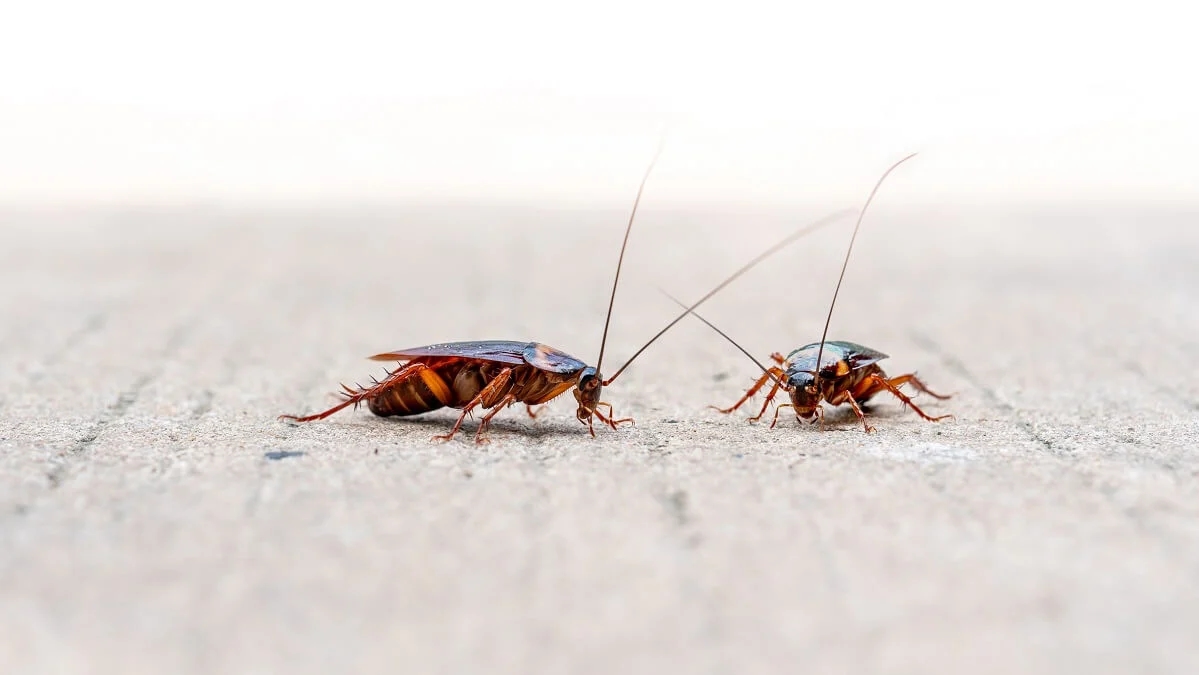
If you’ve noticed tiny roaches in your kitchen or bathroom, you may be dealing with baby cockroaches — also known as cockroach nymphs. These small pests can spread bacteria, trigger allergies, and signal a budding infestation. This guide covers how to identify these pests, understand the risks they pose, and apply proven methods to eliminate and prevent them.
Related Reading: Baby Cockroaches — Your Pet Planet
1. What Are Baby Cockroaches?
Baby cockroaches are the juvenile stage of adult roaches, typically measuring 1/8 to 1/4 inch in length. Newly molted nymphs appear white or pale, darkening to tan or reddish-brown as they grow. They are wingless, with only underdeveloped wing pads in later instars.
2. How to Identify Baby Cockroaches
l Recognizing a cockroach nymph is key to early intervention. Look for:
Size: Much smaller than adult roaches, often as small as a grain of rice.
l Color: Pale after molting, gradually turning light or dark brown as they age.
l Body: Oval shape with a flat exoskeleton, making it easier to hide in narrow cracks.
l Features: Six spiny legs for quick movement and long antennae for detecting food and danger.
Wings: Absent in nymphs — unlike adults, they cannot fly.
l Molting: Shed their skin multiple times before reaching adulthood.
l Speed: Quick runners, often disappearing into crevices within seconds when disturbed.
l Behaviour: Skittish, nocturnal, hiding in dark, damp areas
3. Why Baby Cockroaches Matter
These tiny pests are more than a nuisance:
l They carry harmful bacteria like Salmonella and E. coli
l They trigger allergies and asthma, especially in children
l Their presence indicates an active infestation with breeding adults and eggs
Related Reading: Cockroach Prevention Tips — Your Pet Planet
4. Common Nymph Species & Size Variations
Different species have distinct appearances and sizes:
l German Cockroach Nymphs: 3 mm to about 10 mm in size; tan-colored with two distinctive dark stripes on their back.
l American Cockroach Nymphs: Around 5 mm when young, growing up to 30 mm; start pale and gradually turn reddish-brown.
l Oriental Cockroach Nymphs: 6 to 12 mm; begin red-brown and darken to an almost black shade as they mature.
· 5. Where Baby Cockroaches Hide
These nymphs thrive in warm, moist hiding spots:
l Behind appliances (like stoves and refrigerators)
l Under sinks and dishwashers
l Inside bathroom cabinets
l In cracks, wall voids, and crevices
6. How Baby Cockroaches Enter Your Home
Common entry factors include:
l Leftover food or crumbs
l Water leaks and high humidity
l Gaps around doors, windows, and utility lines
7. Best Methods to Eliminate Baby Cockroaches
Implement these proven control strategies:
l Keep kitchens clean and free of crumbs — wipe counters, sweep floors daily, and avoid leaving dirty dishes overnight.
l Store food in airtight containers — roaches can chew through thin packaging, so use glass or thick plastic.
l Repair leaks and reduce moisture — fix dripping taps, insulate pipes, and use a dehumidifier in damp areas.
l Seal cracks and crevices with caulk — pay special attention to gaps around sinks, baseboards, and cabinets.
l Use gel baits or roach bait placed near nesting areas — bait works by allowing poisoned roaches to return and infect others.
l Deploy sticky traps in high-traffic zones — check and replace traps weekly to monitor infestation levels.
Additional Powerful Tips:
l Vacuum regularly, especially in hidden areas like behind appliances and under furniture.
l Empty trash bins daily and clean them with disinfectant to remove lingering odors.
l Avoid leaving pet food out overnight — store it in sealed containers.
l Wash and dry kitchen towels and sponges frequently to prevent food residue buildup.
l Install door sweeps and weather stripping to block roaches from entering your home.
l Use boric acid powder in wall voids and under appliances — it’s lethal to roaches but safe if applied correctly.
l Rotate bait locations every few weeks to prevent roaches from avoiding them.
l Consider using insect growth regulators (IGRs) to stop baby cockroaches from maturing and reproducing.
8. Trusted External Resources
UC IPM — Cockroaches (Pest Notes) — Expert guidance on cockroach species, habitats, identification, and integrated pest management strategies.
UC IPM — Quick Tips: Cockroaches — Practical advice on sanitation, exclusion, and using traps to monitor and prevent infestations.
CDC — Controlling Asthma (Cockroach Guidelines) — Health-focused recommendations to reduce allergen exposure from cockroaches in the home.
Conclusion
Baby cockroaches may seem harmless, but they’re a red flag for infestation. By learning how to identify cockroach nymphs and taking quick, decisive action, you can safeguard your home and health and stop an infestation before it spreads.
